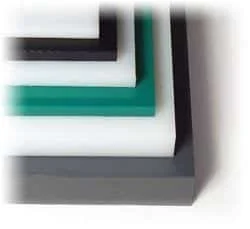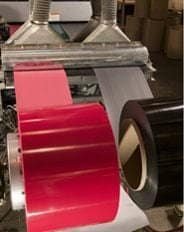
Common Uses of HDPE (High-Density Polyethylene)
HDPE or High-Density Polyethylene is part of a widely-used family of thermoplastics, HDPE ‘Polyolefin’, which is produced through polymerizing ethylene and propylene for properties that are excellent in applications such as food handling, food preparation equipment, wear resistance, consumer goods, and much more.
Why this thermoplastic is so popular
HDPE is known for its excellent strength-to-density ratio, as well as its strong intermolecular forces, high impact and tensile strength. These properties combine for a hard, durable plastic that is excellent for many applications from containers for consumer goods to chemical and structural tanks components. At the same time, HDPE is lightweight and highly resistant to stains, odor, moisture, chemicals, and abrasion. Most importantly, HDPE doesn’t contain harsh or toxic chemicals that could be harmful to users, making it excellent for a wide variety of consumer and commercial products. Specifically, HDPE does not contain: BPA, Phthalates, Allergens, Heavy Metals or Harmful fumes.
HDPE has excellent wear and chemical resistance. HDPE is a commonly used material for rub strips, chute liners and bottling plant components. An example of wear resistance is the yellow plastic playground slides which are made of HDPE. This versatile plastic material is often the choice for use for chemical and toxic containers and bottles.
The HDPE material is the common material used to make the one gallon milk jugs. These are easily recycled, and 8 – 10 milk jugs is equal to about one pound of recycled HDPE material. On average, over 115 million milk jugs are recycled each year.
Some common uses of HDPE
HDPE is FDA, USDA, and NSF compliant, making it especially popular for making components such as cutting boards, food preparation surfaces and equipment components. HDPE is often used in a wide range of food processing equipment, food containers and bottles, as well as valve and pump components. However, the Food processing industry isn’t the only industry relying on HDPE. Its excellent impact strength makes this plastic popular for everything from impact parts to dasher boards in ice rinks, to personal protection gear.
In addition, HDPE has excellent properties that make it perfect for heat-formed or vacuum-formed parts, producing food trays and containers and much 
As one of the most used plastics, HDPE has a density of just .941 – .965 per ASTM D792. While many think of Aluminum as a lightweight material, it actually is 2.8 times the weight of HDPE plastic material.
HDPE also has been successfully used in a variety of cement molds and various types of transfer and storage boards. This plastic can be found in crates and bottles for holding not just food products, but also detergents and cosmetics. Industrial pallet wrapping benefits from HDPE film durability, while petrol tanks benefit from this plastic’s inherent chemical resistance.
Looking for a supplier of polyethylene thermoplastics?
Industrial Plastic Supply, Inc. is an expert in performance plastics, and has one of the largest material inventories in the World. To learn more, check out full line Performance Plastic materials on our website.

